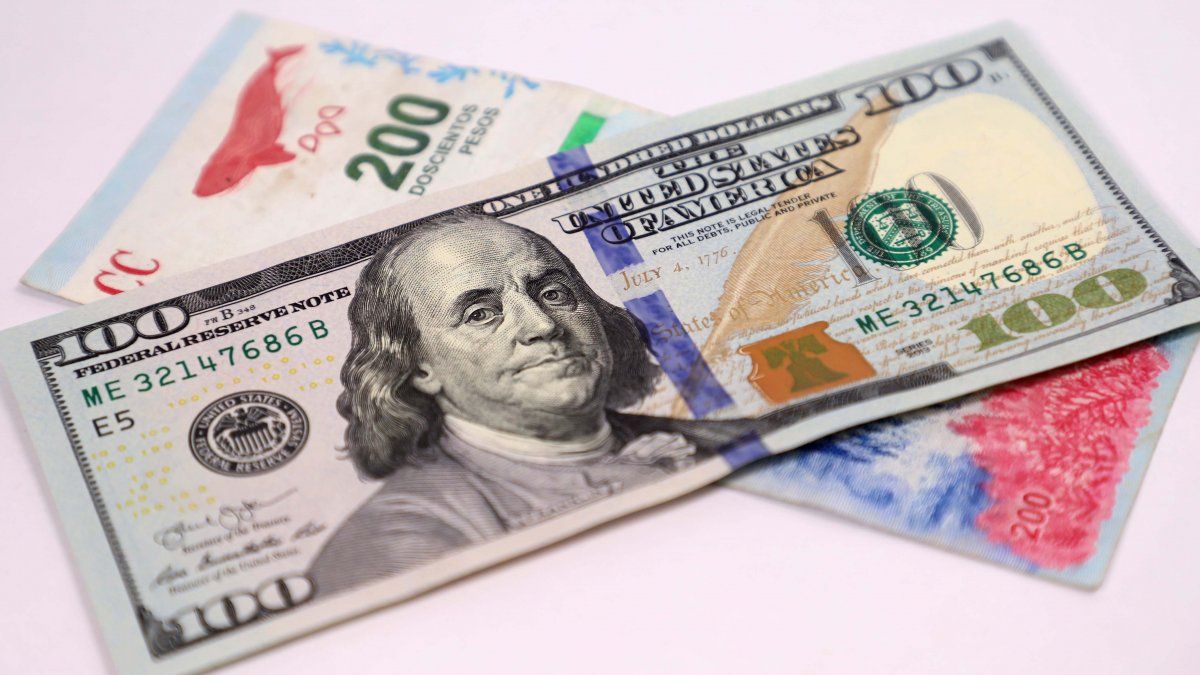The Argentine economy is bi-monetary. This means that the dollar occupies functions of the currency such as the unit of account, the means of payment and the store of value. Proof of this are buying and selling real estate in dollarsthe elevated price transfer of the variations in the exchange rate and the more than u$s260,000 million of Argentines in the safe deposit boxes.
However, bimonetarism is not an exclusively Argentine phenomenon. Good part of the Latin American countries —such as Brazil, Chile, Uruguay, Peru and Bolivia, among others— have had the same problem and, with the right incentives, they were able to strengthen the national currency in a process of stabilization of their economies.
Argentina can also reduce its degree of bimonetarism, since this is not an idiosyncratic phenomenon, but rather has recognizable economic causes. The first: inflation, a constant of the national economy that makes it difficult to carry out contracts in pesos. The second: in the last 50 years whoever bet on the national currency lost compared to who bet on the dollar. This has been given so much an unattractive interest rateas for the succession and frequency of disruptive events: defaults, deposit freezes, destruction of official statistics, sudden devaluations and stocks.
A bi-monetary economy finds it difficult to break out of a vicious circle. faces greater exchange pressure due to the demand for dollars for hoarding. In an inflationary context, this causes further pass-through to prices from devaluations. The greater nominal volatility hinders the development of the capital market in pesos, which reduces the financing capacity of the public and private sector, and limits the margins of fiscal policy. Finally, the growth of the economy and exports are affected, which decreases the supply of dollars and again generates pressure on the exchange rate.
If bimonetarism does not begin to be reversedthere will be no export boom that reaches. The alternatives are dollarize or stabilize by strengthening the national currency. While dollarization could eliminate some sources of instability, it does so at an enormous cost: giving up exchange rate policy and its ability to cushion exogenous shocks, relinquish control of interest rates and possibility to act countercyclically.
Besides, does not eliminate the possibility of carrying out processes of unsustainable fiscal deficit and indebtedness, and it does eliminate the lender of last resort. Let’s give close examples: a dollarized economy would not have been able to sustain family income during the pandemic nor could it stabilize the financial system by guaranteeing deposits as it is doing Currently the developed world facing the banking crisis.
In addition, stabilizing through dollarization means doing it at a much higher exchange rate than the equivalent of doing it with your own currency. With current values, dollarizing with the net reserves of the Central Bank would imply a conversion exchange rate greater than 2,000 if only the monetary base is changed, and more than 7,000 if remunerated liabilities are also included. In both cases, income would seriously affect their purchasing power.
Finally, What are the necessary conditions to dollarize the economy? Reduce the fiscal and current account deficit to financeable levels, accumulate international reserves, align relative prices (exchange rate and tariffs) and implement an income policy to curb inflationary inertia, since if maintained it could cause residual inflation in dollars that undermines the competitiveness. That is to say, the same conditions as for undertaking a stabilization process with its own currency.
For all these reasonswe believe that the best and only way of stabilization possible is with the strengthening of the weight. How to do it? First of all, reward those who save in local currency, from one positive interest rate in real terms and greater than the return expectation of the alternatives in dollarswhich requires avoiding sudden jumps in the exchange rate.
Bank regulation should go in the same direction: higher reserve requirements for dollar deposits and deposit insurance only for those denominated in pesos. Also start a deindexation process is a necessary condition. Although indexation allows the local currency to maintain certain functions in an inflationary context, it does so at the cost of entrenching inertia and establishing an inflation floor that is difficult to pierce. With price variation exceeding 100%, indexing is clearly not the best option.
The current context may make this enumeration look like wishful thinking: it isn’t. They are political solutions to a phenomenon that has economic causes, which will only be possible as long as a stabilization process begins. Meanwhilethe compulsory pesification of contracts and the breach of debt commitments in pesos must be avoided at all costs. Finally, it is necessary to start a path towards the normalization of the exchange market.
In short, we have an increasingly bi-monetary economy, which fuels inflation and limits our ability to manoeuvre. Stabilizing and strengthening one’s own currency takes time: it requires the political arc to find the lowest common denominators to sustain policies over timeregardless of who rules. Dollarization requires initial conditions identical to those necessary to face a stabilization process with its own currency. In this sense, why resign the currency and limit future development possibilities?
*Guido Zack is Director of Economics at Fundar.
**Emiliano Libman is an Economics researcher at Fundar.
***Juan Martín Ianni is an Economics Analyst at Fundar
Source: Ambito




